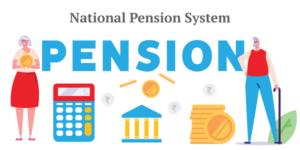
Being a freelancer means you’re a solo operator. There’s no one to provide assistance or guidance, and you’re responsible for forging your own path. One significant drawback is the absence of supervision and mentorship that typically comes with a regular job, which can lead to more frequent mistakes.
My freelance writing journey began in June 2018, and it has been quite a remarkable experience. It has brought me increased income, independence, and respect beyond my initial expectations. However, I’ve also made some costly errors that have taken a toll on my finances over the course of a year.
In this article, I’ll highlight three major blunders I made as a newcomer to freelancing. If you’re embarking on your freelance writing journey, read on for valuable insights.
Accepting One-Time Assignments
As a novice freelance writer, it can be challenging to secure a stable monthly income. In such circumstances, it’s tempting to accept every well-paying gig that comes your way, even if it offers little long-term value.
When I first started freelancing, I had a tendency to say yes to any assignment that piqued my interest and paid reasonably well. However, after investing numerous hours in a project and immersing myself in the client’s topic, I often found that there were no follow-up opportunities once the work was delivered. All the research and knowledge gained during the project seemed wasted.
One-time assignments may provide quick cash, but in hindsight, they consume a significant amount of time and effort without contributing to your portfolio (especially if they involve ghostwriting, where you receive no endorsements).
These assignments barely make a mark in the long run, despite their temporary financial benefit. I now refrain from accepting one-time assignments unless the client guarantees a recommendation. While they may offer good pay, they do little to provide stability, security, or influence in my career.
Key takeaway: As a freelance writer, prioritize projects that offer long-term benefits. This could involve recurring assignments or work that enhances your portfolio.
Avoid being lured by one-time deals, regardless of their apparent appeal or payment. Spending hours researching a topic you’ll never revisit hardly justifies your time.
Negotiating with Clients Who Bargain
Several months ago, a client requested a 2,000-word essay from me. I provided my standard pricing, but they negotiated it down to 70% of my initial quote. Although I was uncomfortable with this, I was new to my career and needed the money, so I agreed.
Unfortunately, this client turned out to be one of the most challenging I had ever worked with. They incessantly demanded updates, even though the deadline was a week away. After submitting the project, they insisted on a lengthy phone call to suggest minor changes that could have been conveyed through email comments. This was a significant drain on my time, energy, and peace of mind.
After that experience, I made a personal rule never to accept clients who bargain for a lower price than my initial quote.
Key takeaway: When a client questions your pricing, it often foreshadows micromanagement and a lack of appreciation for your work. It’s advisable to disengage at the first sign of trouble and avoid clients who don’t recognize your value, regardless of their payment.
Engaging with Clients Who Pay Hourly Rates
I’ve heard stories from friends who worked for clients paying hourly rates. One friend recounted working continuously for 14 hours on a challenging project, only to have the client reject it. They were paid for only 4 hours of work. Learning from this, I decided to decline clients who insisted on hourly rates from the outset.
Hourly rates pose challenges because you can’t accurately gauge how long a task will take. Something that seems simple to you might be complex for the client, and vice versa. This uncertainty is especially relevant for your first job with a client when they may not be familiar with your working pace. Charging per project is often a better approach than hourly rates, as it prevents disputes and client perceptions of overcharging.
Key takeaway: While hourly rates may work for some freelancers, if you lack experience with this pricing model, it’s best to initially quote on a per-project basis. This simplifies billing, avoids the need to justify time spent, and reduces potential conflicts.
In conclusion, every freelancer’s journey is unique, and there’s no one-size-fits-all formula for success in freelance writing. However, by avoiding these three mistakes I’ve highlighted, you can make your journey considerably smoother:
- Be selective with projects, focusing on long-term potential or CV enhancement.
- Avoid clients who insist on bargaining.
- Consider project-based pricing over hourly rates to prevent disputes and maintain positive client relationships.
Do any of these insights resonate with your freelancing experience? I’d love to hear your thoughts in the comments.





